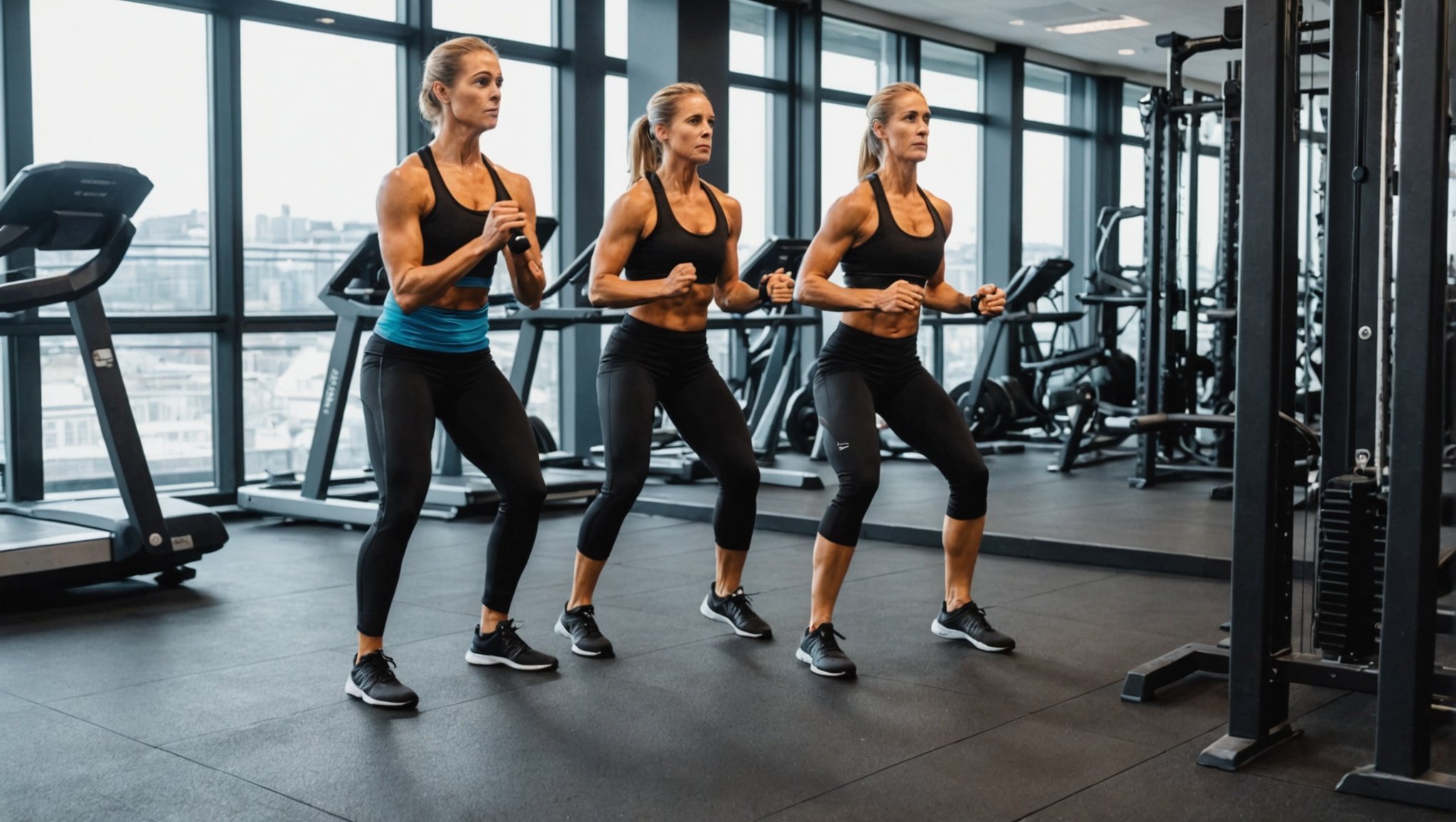In the world of fitness and training, it’s not only the type of exercise that matters but also the sequence in which you perform them. Sequencing greatly influences your overall performance, strength, and muscle growth. But, how does this play out in terms of hormonal responses? Can the order in which you engage in exercises influence your hormone levels? Let’s delve into the details!
Sequencing Exercises and Hormonal Response
Before we dive into the impact of exercise order on hormonal responses, it’s worth understanding the basic relationship between exercise and hormones. Hormones, such as testosterone and growth hormone, play a significant role in muscle growth and strength. They tend to spike during resistance training and are crucial for recovery and muscle adaptation.
Also read : What are the specific mental visualization techniques to enhance strength gains?
Exercise and Hormonal Responses
Exercise triggers a cascade of hormonal responses that have profound implications for your bodily functions and performance. These hormones regulate various physiological processes such as metabolism, growth, and mood. For instance, resistance exercises typically increase the release of anabolic hormones like testosterone and growth hormone, which are vital for muscle growth and repair.
According to a review published on Pubmed, resistance training induces acute hormonal responses that enhance muscle strength and hypertrophy. However, the magnitude of these responses may vary depending on the type of exercise, duration, intensity, and rest intervals. This hormonal surge is short-lived, as your body strives to maintain a hormonal balance.
Also to discover : How can heart rate variability be used to tailor recovery in strength training?
Google Scholar also reports that the sequencing of exercises can impact these hormonal responses. The order in which exercises are performed can influence the volume of exercise, which subsequently affects the hormone release.
Hormonal Responses in Men and Women
The hormonal responses to exercise are not uniform across the genders. Men and women may exhibit different hormonal responses to the same exercise session. For instance, men tend to have higher basal testosterone levels, which amplify further during resistance exercises.
A study on Pubmed reveals that men show a significant increase in serum testosterone levels following a resistance training session. On the other hand, women respond differently to resistance exercises. They exhibit a smaller increase in testosterone but a more pronounced increase in growth hormone levels.
The difference in hormonal responses also extends to the sequencing of exercises. Men may experience a more significant surge in anabolic hormones following compound exercises such as bench press and squats, while women may benefit more from a mix of compound and isolation exercises.
Exercise Sequence and Hormone Release Pattern
The sequence of exercises in a training session can significantly influence the hormonal response. Typically, exercises are categorized into compound and isolation exercises. Compound exercises involve multiple joints and muscle groups, while isolation exercises target a specific muscle.
Impact of Compound and Isolation Exercises on Hormonal Responses
A study indexed in Crossref suggests that compound exercises, performed at the beginning of a workout session, elicit a higher anabolic hormonal response compared to isolation exercises. This is because compound exercises engage multiple muscle groups and require more energy, triggering a more pronounced hormonal response.
However, performing isolation exercises first could pre-exhaust the muscles, reducing the effectiveness of subsequent compound exercises. This sequence could lead to a reduced volume of exercise and, consequently, a lower hormonal response.
Sequencing Exercises for Optimal Hormonal Responses
For optimal hormonal responses, it would therefore be beneficial to perform compound exercises first, followed by isolation exercises. This sequence allows for a higher overall volume of exercise and a more significant hormonal response.
A study in the DOI database supports this notion. It showed that performing squats (a compound exercise) before bicep curls (an isolation exercise) led to a higher serum testosterone response compared to the opposite sequence.
To Sum It Up
The order of exercises in your training session matters more than you might think. It can significantly affect your hormonal responses, which in turn influence your strength, muscle growth, and overall performance. While these findings provide valuable insights, remember that everyone’s body responds differently to exercise. Tailor your workout session to suit your individual needs and goals, to get the most out of your training.
A Word of Caution
While manipulating exercise sequence for optimal hormonal responses can be beneficial, it’s crucial not to overemphasize hormones at the expense of other factors that contribute to fitness gains. Remember, consistency in training, proper nutrition, adequate recovery, and a positive mindset are equally important. Always listen to your body and seek professional guidance to develop a balanced and sustainable workout regime.
Practical Application of Sequencing in Training Sessions
In light of these findings, it’s essential to consider the sequence of exercises in your training regimen. Starting with compound exercises and then transitioning to isolation exercises seems to be the most beneficial in terms of eliciting an elevated hormonal response.
The Role of Sequencing in Resistance Training
Resistance training is widely recognized as an effective method to stimulate muscle growth and strength. Its effects are largely mediated by hormonal responses, particularly surges in anabolic hormones such as testosterone and growth hormone. A study indexed in PubMed Crossref substantiates this, demonstrating that resistance exercise induces an acute increase in serum testosterone levels.
As per the research available on Google Scholar, the sequence in which resistance exercises are performed can significantly influence these hormonal responses. Beginning a workout with heavy resistance, compound exercises that recruit multiple muscle groups, can potentially elevate testosterone and growth hormone levels more than performing isolation exercises first.
Individualizing Exercise Sequencing
Although this sequencing strategy appears to be optimal for most individuals, it’s important to remember that everyone’s physiological responses to resistance training differ. An individual’s age, gender, fitness level, and genetic makeup can significantly influence their hormonal responses to exercise.
For instance, a study indexed in Sports Med DOI found that younger individuals and men typically experience a more pronounced testosterone response to resistance exercise compared to older individuals and women. Therefore, it may be necessary to adjust the sequence and variety of exercises to accommodate these individual differences.
Final Thoughts
The order in which exercises are performed in a training session can significantly impact hormonal responses, subsequently affecting muscle growth, strength, and overall fitness performance. Research supports the notion that starting a workout with compound exercises, followed by isolation exercises, maximizes the release of anabolic hormones such as testosterone and growth hormone.
However, it’s necessary to underline that while hormones play a crucial role in muscle growth and strength, they are not the sole determinants of fitness progress. Other elements, such as consistency in training, proper nutrition, adequate recovery, and mental wellbeing, are equally vital. Therefore, it’s essential to adopt a holistic approach to fitness, incorporating all these elements into your training routine.
Moreover, it’s crucial to personalize exercise sequencing to meet individual needs, goals, and physiological responses. Seek professional guidance from a sports medicine or strength conditioning coach to develop a balanced, effective, and sustainable training regimen. And, as always, listen to your body’s signals and adjust your workout regimen accordingly.
Remember, every step you take towards better fitness, no matter how small, is a step in the right direction. Keep pushing, keep improving, and you’ll reach your goals in no time.













